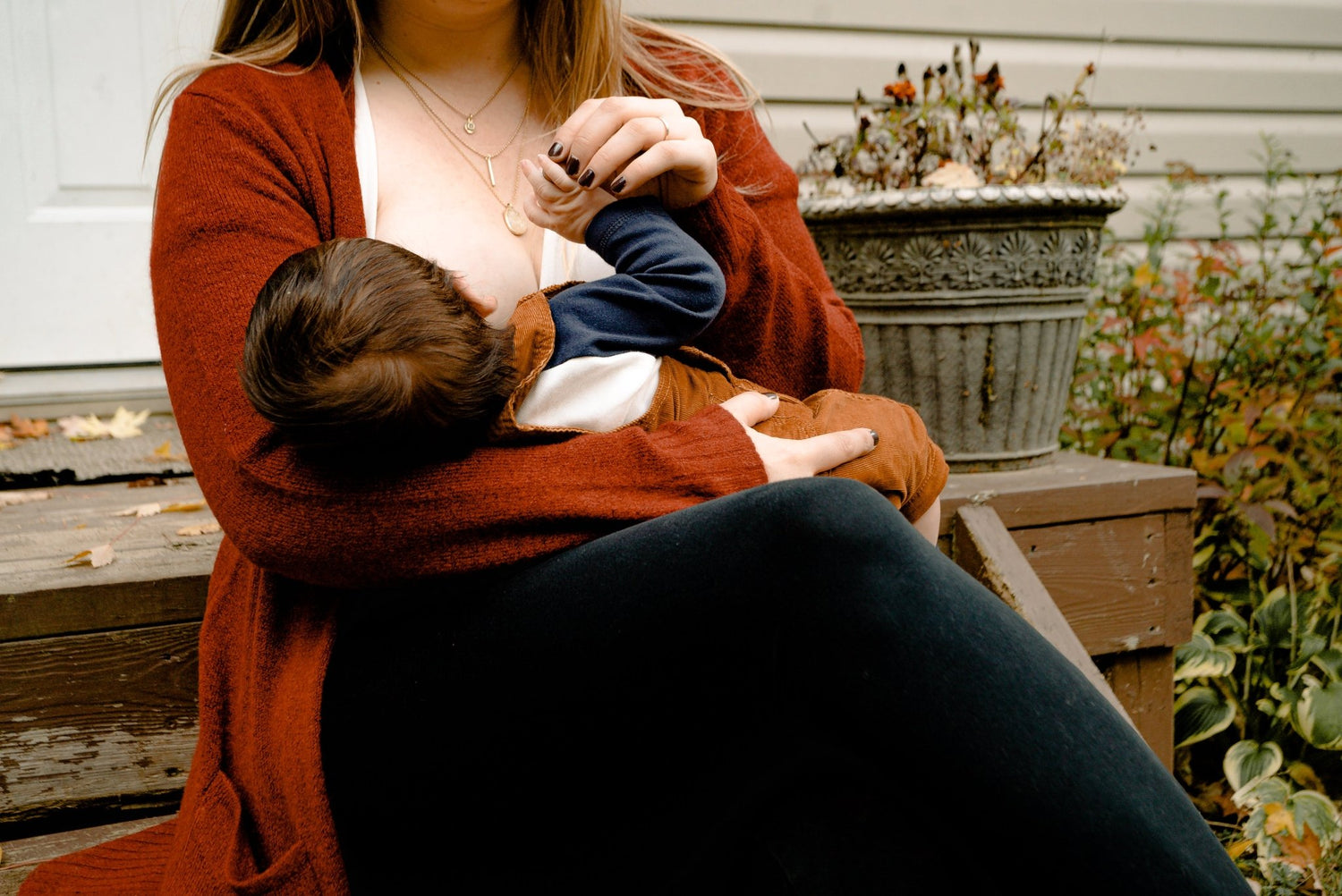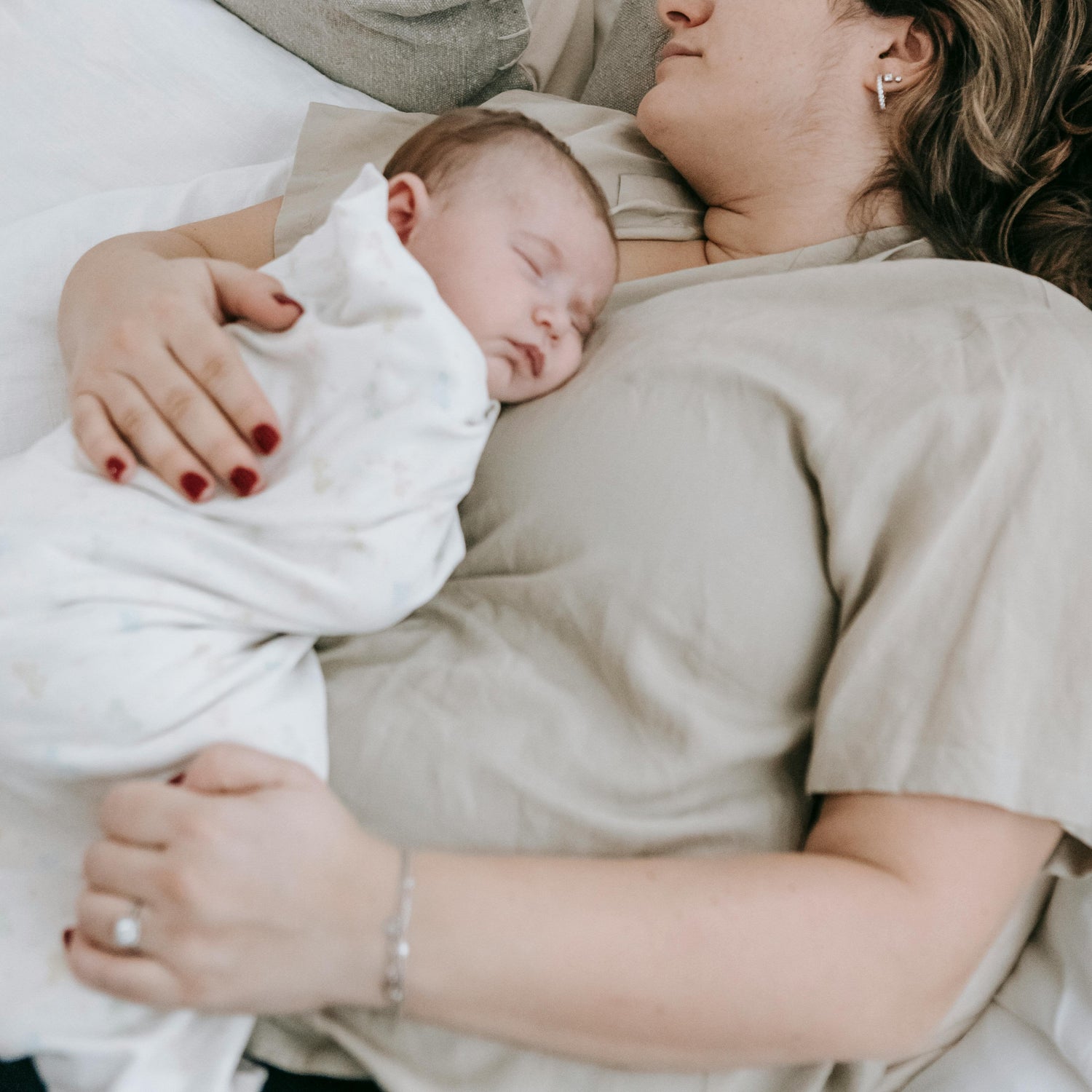Sleeping like in a baby's belly: security through confinement
In the womb it was very tight for the little ones towards the end. Arms and legs had hardly any space to stretch out. They felt a limitation all over their bodies. Hardly in the world, this limitation is gone from now on. Many babies cannot deal with this unfamiliar situation and cry a lot, even though they don't seem to be wrong. However, they long for the narrowness of the womb. This feeling should be recreated by swaddling.
|
Table of contents: 1. What does swaddling mean? |
1. What does swaddling mean?

Swaddling is a traditional swaddling method in which babies are wrapped tightly in a cloth, blanket or pucksack. The baby's arms are held close to the body, while the legs have a little more freedom of movement. Swaddling mimics the tightness and security of the mother's womb and can help the baby to feel safe and secure. Reflex twitching and startle reactions are reduced, which makes it easier to fall asleep and leads to better sleep overall.
2. Swaddling: step-by-step guide
o puck a baby properly, square, slightly elasticated cloths are particularly recommended. The ideal size is 80 cm x 80 cm, but there are also larger swaddles or even a swaddle bag. Make sure that the material is breathable and allows the baby sufficient freedom of movement. The following steps are for using a swaddle cloth.
1. Lay the swaddle cloth or blanket in a diamond shape in front of you and fold the top corner towards the centre.
2. Lay the baby on its back so that its head is above the folded corner.
3. Wrap one side of the cloth tightly around the baby's body and place the corner under the baby's back.
4. Now wrap the other side of the sling tightly around the baby's body and place this corner under the baby's back as well.
5. Make sure that the baby's hips remain free and that the sling is not wrapped too tightly.
3. Advantages of the swaddling
What is the actual reason for swaddling? As already mentioned, swaddling recreates the feeling of security in the womb. However, there are also other factors that have a positive influence on swaddling.
- Better quality of sleep for you and your baby
Swaddling prevents the baby from being disturbed by uncontrolled movements, which can be triggered by the Moro reflex, for example, and by unintentional waking. As a result, the baby sleeps longer and deeper, which leads to improved sleep quality for the baby and you as a parent. Proper swaddling prolongs the sleep phases and ensures a more restful and peaceful sleep overall.
- Reducing the risk of sudden infant death syndrome (SIDS)
Studies suggest that swaddling can reduce the risk of sudden infant death syndrome (SIDS) as babies are kept in a safe sleeping position at night. As the child lies on its back and cannot roll onto its stomach because the arms are fixed to the body, the airways remain free and are not blocked. This reduces the risk of sudden infant death due to suffocation.
4. Criticism of swaddling
Swaddling is not without controversy. Various experts take a critical view of this technique, as it can restrict the baby's natural freedom of movement if the swaddle is wrapped too tightly. The hips must be able to move and the legs stretched out. If this is not observed, it can favour a misalignment of the hip joint (hip dysplasia) and restrict motor skills in the long term. It is therefore very important that parents know the correct swaddling technique and wean their baby from swaddling in good time if it becomes too vigorous or moves too much during sleep.
4.1. Timely unpacking
The latest sources advise only swaddling the baby until the eighth week of life. Until then, swaddling was allowed up to the sixth month at most. The reason for the earlier swaddling is that some children start rolling very early and without warning. If the little ones swaddled and turn onto their stomachs, they can no longer turn back on their own. If this happens unattended at night, the child can suffocate lying on its stomach.
4.2. Supine position
Very important, swaddled babies may only be placed on their backs. When children are wrapped up and placed on their stomachs, it is often not possible for them to turn onto their backs due to the restricted freedom of movement. Babies are also not yet sufficiently able to turn their heads to the side, so the risk of suffocation is drastically increased.
4.3. The right equipment
There are special swaddles and swaddle bags. But no matter what you choose, the fabric should be elastic, breathable and not too thick.
4.4. Leg and hip freedom
When swaddling, it is important that the hips and legs are allowed sufficient freedom of movement. The hips should be able to move and the legs should be able to be straightened.
4.5. Beware of overheating
Most importantly, tight wrapping encourages overheating. Therefore, it is important that the children are not overdressed. However, this depends on the time of year and varies from child to child.
5. Breaking the habit of swaddling
The latest sources advise that babies should only be spit up until they are eight weeks old. Until then, spitting was only allowed up to the sixth month. The reason for stopping swaddling earlier is that some children start to roll over very early and without warning. If the little ones turn onto their tummy after being spit up, they can no longer turn back on their own. If this happens unattended during the night, the child can suffocate in the prone position.
Many babies find it very difficult to give up the limited feeling of being swaddled. To make it as gentle as possible, we have written a step-by-step guide on how to wean your child off swaddling.
6. My baby doesn't want to be swaddled
Although swaddling has a calming effect on many babies, not all babies react positively to it. If they refuse swaddling, you can offer them other calming techniques, such as a dummy or white noise to help them fall asleep. Baby sleeping bags such as our Wombi can also help, as they provide a similar feeling to swaddling due to the slight resistance on the sleeves, but offer more freedom of movement overall. They are a good alternative to a swaddle bag.
Swaddling is one of the most commonly recommended techniques to help babies sleep peacefully and safely. By mimicking the confinement of the womb, swaddling creates a calming environment in which babies can gently settle. It offers many benefits, such as better quality sleep, reduced risk of sudden infant death syndrome and an overall calmer night for parents and baby. However, it is important to understand your baby's needs and try alternative sleep methods if swaddling does not work.




